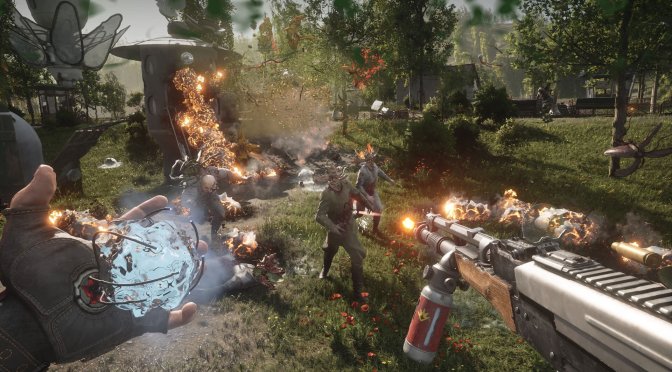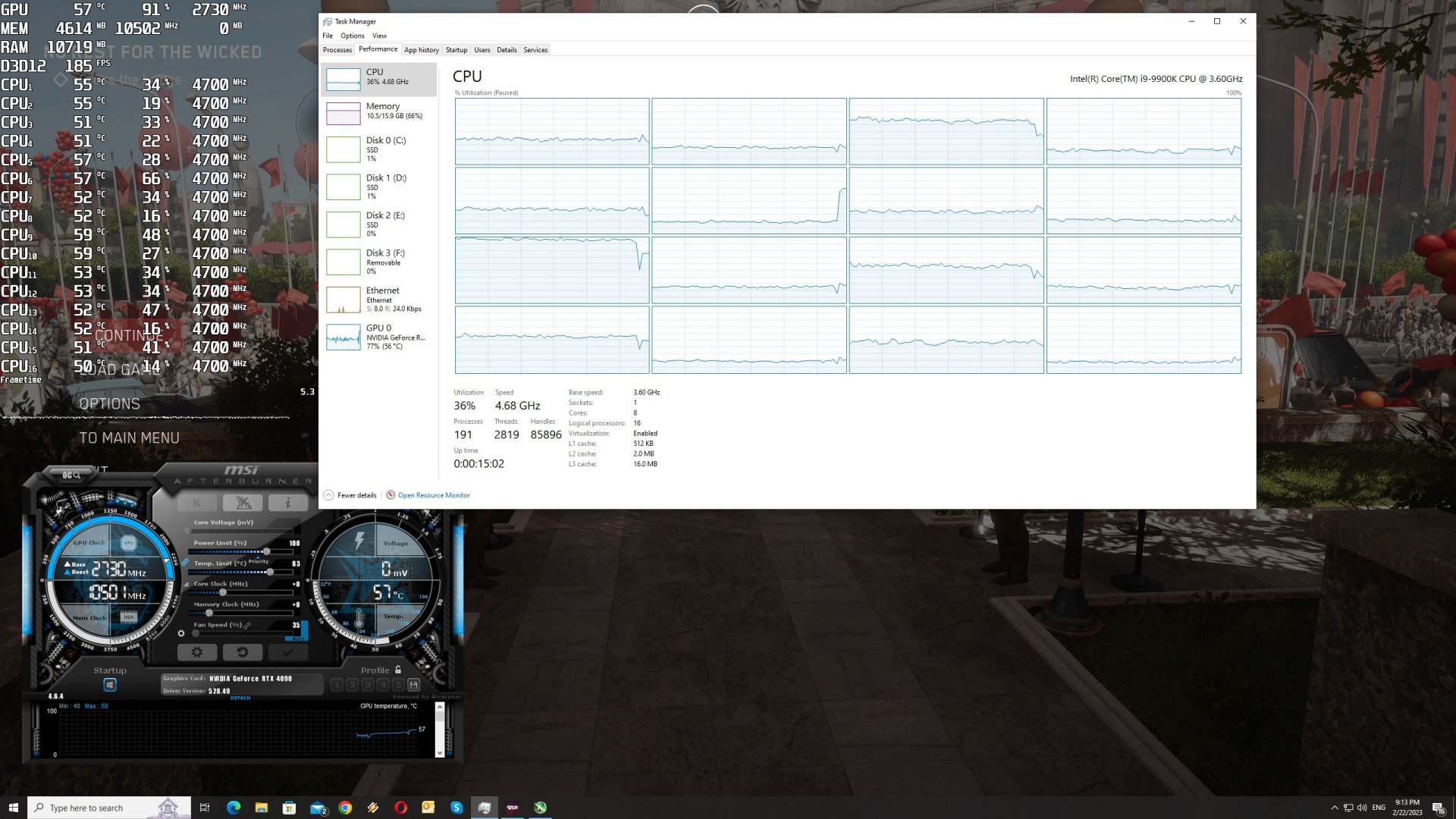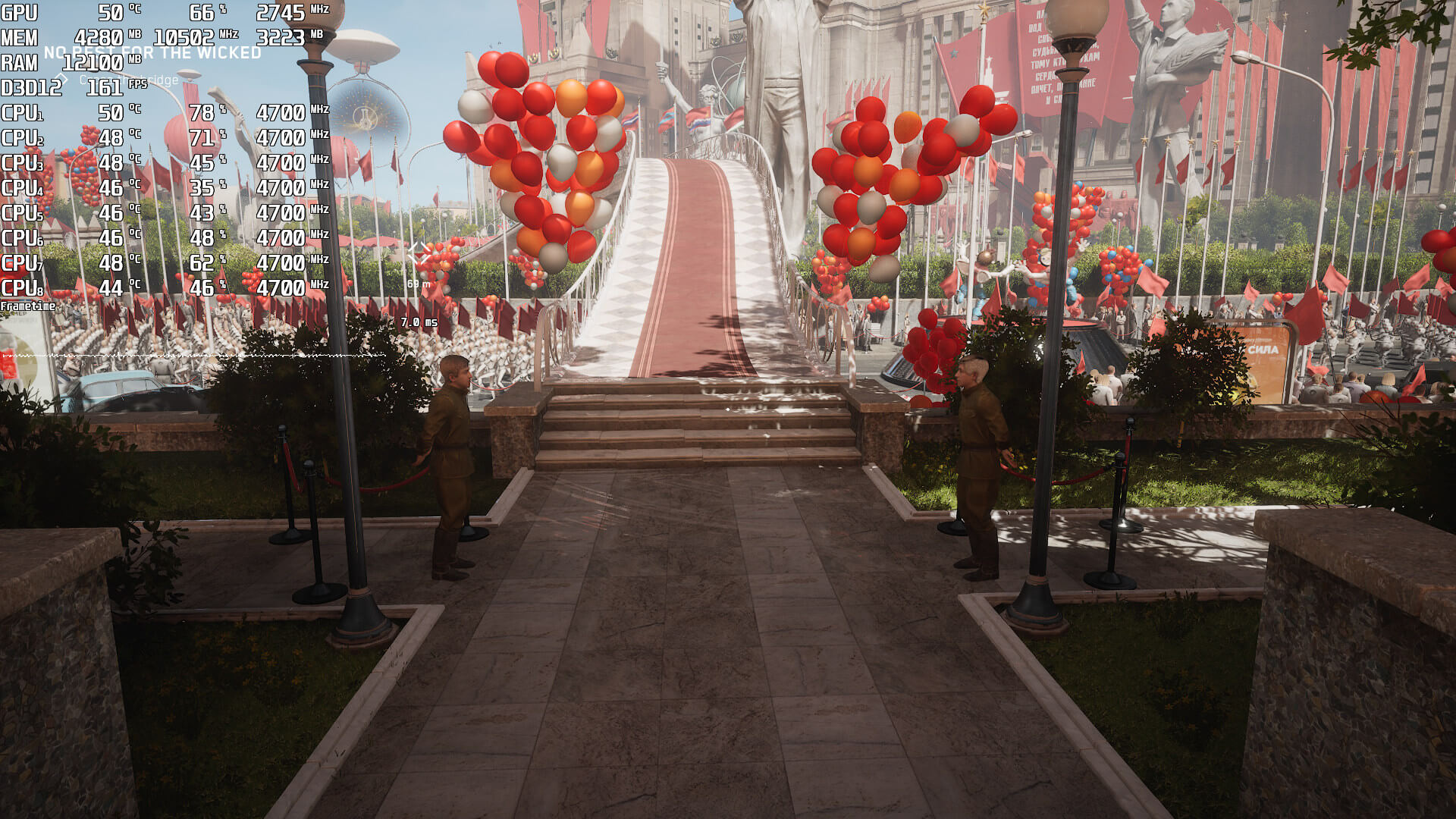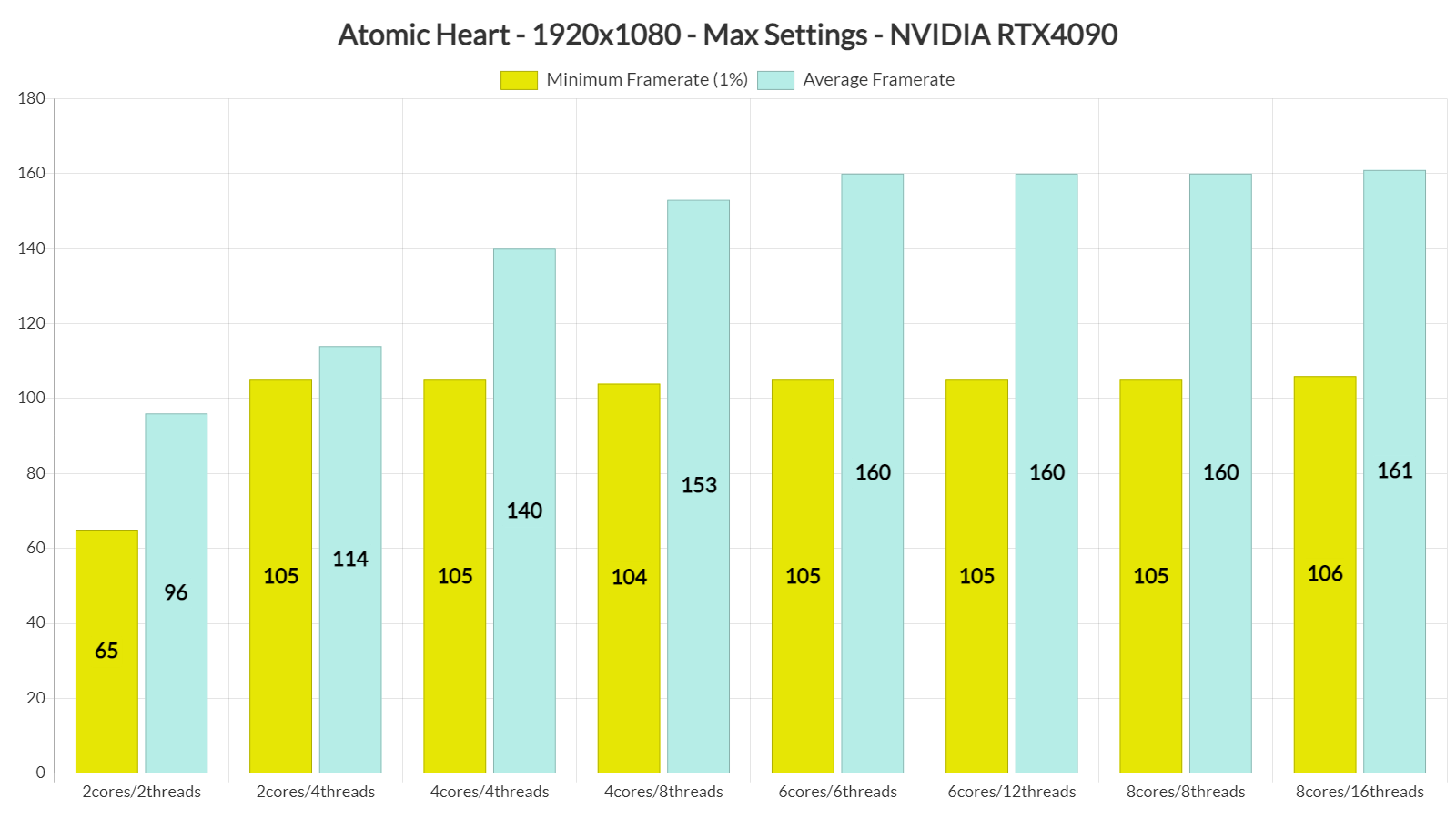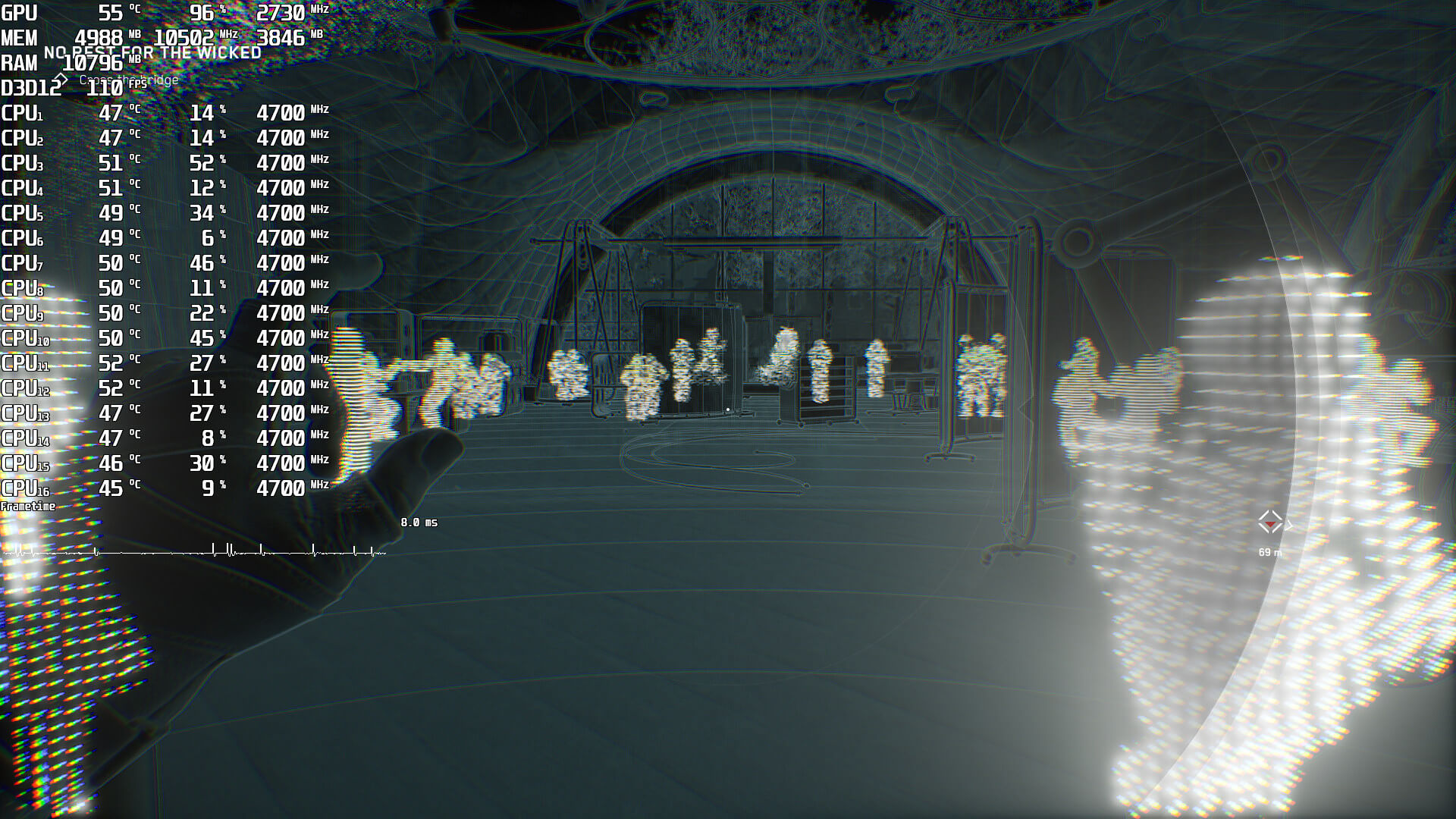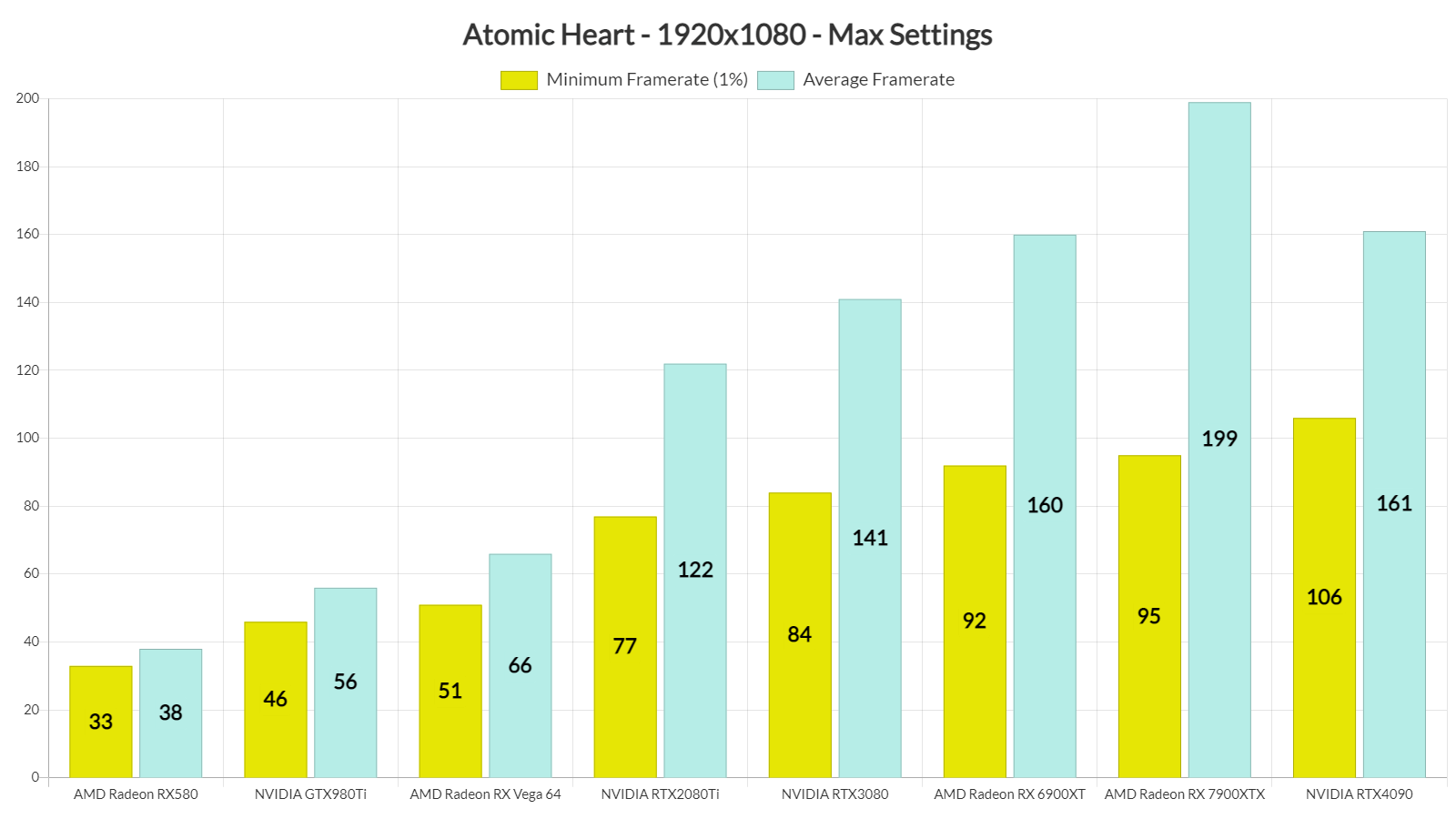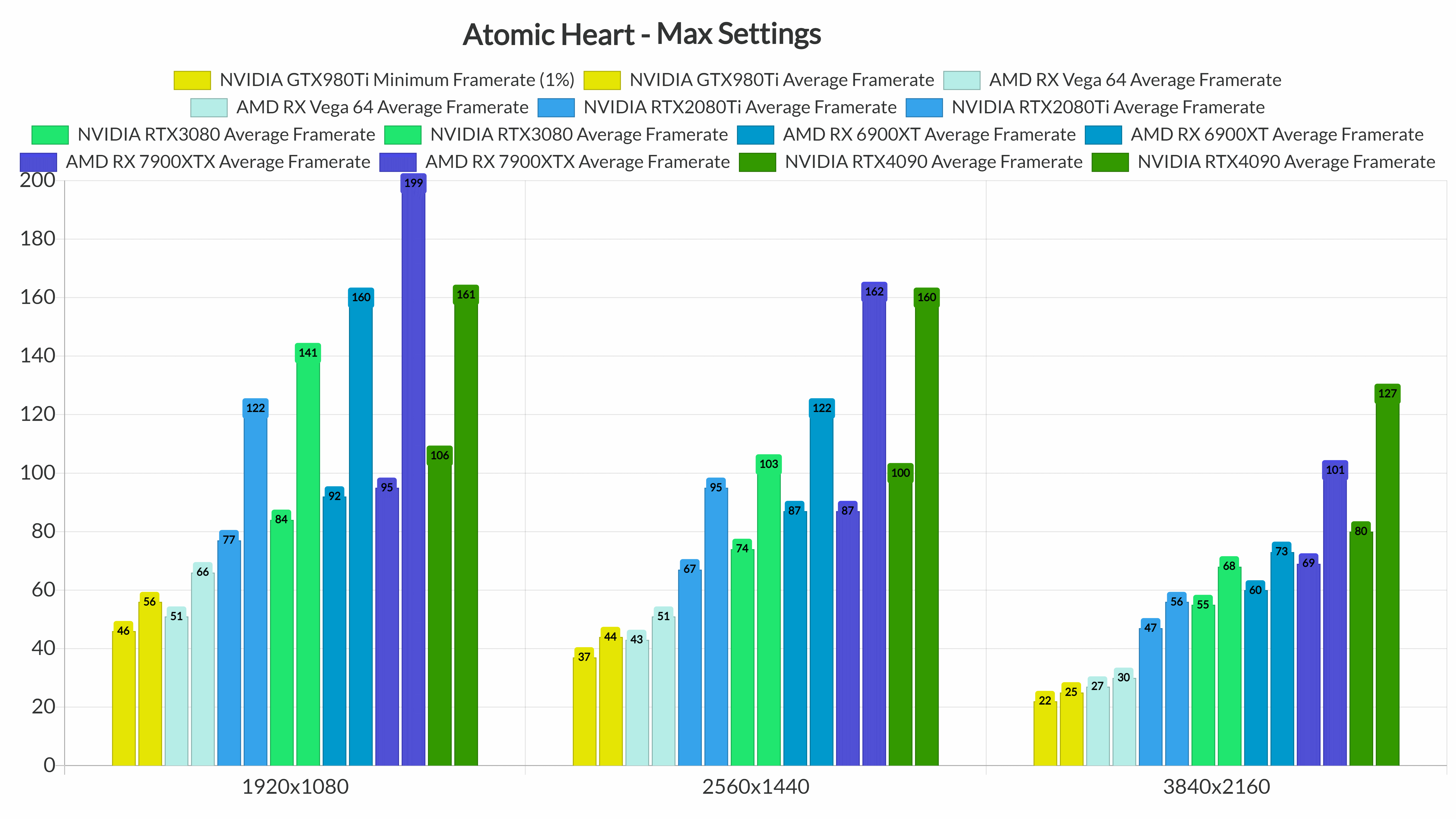Focus Entertainment has released Atomic Heart on PC. Powered by Unreal Engine 4, it’s time now to benchmark it and see how it performs on the PC platform.
For this PC Performance Analysis, we used an Intel i9 9900K, 16GB of DDR4 at 3800Mhz, AMD’s Radeon RX580, RX Vega 64, RX 6900XT, RX 7900XTX, NVIDIA’s GTX980Ti, RTX 2080Ti, RTX 3080 and RTX 4090. We also used Windows 10 64-bit, the GeForce 528.49 and the Radeon Software Adrenalin 2020 Edition 23.2.1 drivers.
Mundfish has added a lot of graphics settings to tweak. PC gamers can adjust the quality of Animations, Textures, Ambient Occlusion, Materials, Volumetric Fog and more. The game also supports DLSS 2/3, as well as FSR. Moreover, it will compile its shaders the first time you launch it. As we’ve already reported, the game also does not feature any Ray Tracing effects at launch. Not only that, but there is no FOV slider (though the developers have confirmed that they will add one via a post-launch update).
Atomic Heart does not feature any built-in benchmark tool. Thus, for both our CPU and GPU benchmarks, we used the scene in which you first use your Scanner. This scene was one of the most GPU-heavy ones we could find, so it should give us a pretty good idea of how the rest of the game will run.
In order to find out how the game scales on multiple CPU threads, we simulated a dual-core, a quad-core and a hexa-core CPU. Surprisingly enough, our simulated dual-core system was able to push constant 60fps at 1080p/Max Settings. There were some hiccups without Hyper-Threading. However, when we enabled HT, we were able to get more stable performance. As for the rest of the CPU configurations, our octa-core and simulated hexa-core performed similarly. From the looks of it, the game can effectively take advantage of 6 CPU cores.
At 1080p/Max Settings, our top five GPUs were able to provide a constant 60fps experience. The AMD Radeon RX Vega 64 came close to it, though there were drops to 51fps. By simply dropping some settings, PC gamers will be able to maintain 60fps on that GPU. Moreover, the AMD Radeon RX 6900XT was able to match the performance of the NVIDIA RTX4090 at 1080p. The RX 7900XTX was also able to beat NVIDIA’s high-end GPU. Yeap, this is another game in which NVIDIA’s DX12 driver brings a significant CPU overhead. At least we’re looking at really high framerates (over 150fps) so this won’t really trouble most PC gamers. We should also note that the minimum framerates are when using the Scanner, and those scenes were GPU-heavy. Below you can see the RTX 4090 being pushed to its limits at 1080p.
At 1440p/Max Settings, our top four GPUs had no trouble at all pushing framerates higher than 60fps at all times. And as for native 4K/Max Settings, the RX 6900XT, RX 7900XTX and RTX4090 were able to offer a constant 60fps experience. The NVIDIA RTX 3080 can also offer a smooth gaming experience, provided you use a G-Sync/FreeSync monitor.
Graphics-wise, Atomic Heart looks amazing. Even without its Ray Tracing effects, Atomic Heart is among the most beautiful FPS games. The environments look amazing, and Mundfish has used numerous high-quality textures. The game can also push a lot of characters on screen with ease. My only gripe with Atomic Heart is its limited draw distance. Even on Max Settings, the game has noticeable pop-in issues (for both characters and environments).
All in all, Atomic Heart looks and performs great on PC. Despite using Unreal Engine 4, the game does not suffer from any major stuttering issues. And, to be honest, this game (which comes from a new studio) puts to shame all other developers that are using UE4. The fact that RTX40 owners can enable DLSS 3 in order to further improve performance is the icing in the cake. Yes, it’s a shame that Atomic Heart does not have its advertised Ray Tracing effects. However, it still looks great and runs smoothly on numerous PC configurations!

John is the founder and Editor in Chief at DSOGaming. He is a PC gaming fan and highly supports the modding and indie communities. Before creating DSOGaming, John worked on numerous gaming websites. While he is a die-hard PC gamer, his gaming roots can be found on consoles. John loved – and still does – the 16-bit consoles, and considers SNES to be one of the best consoles. Still, the PC platform won him over consoles. That was mainly due to 3DFX and its iconic dedicated 3D accelerator graphics card, Voodoo 2. John has also written a higher degree thesis on the “The Evolution of PC graphics cards.”
Contact: Email

